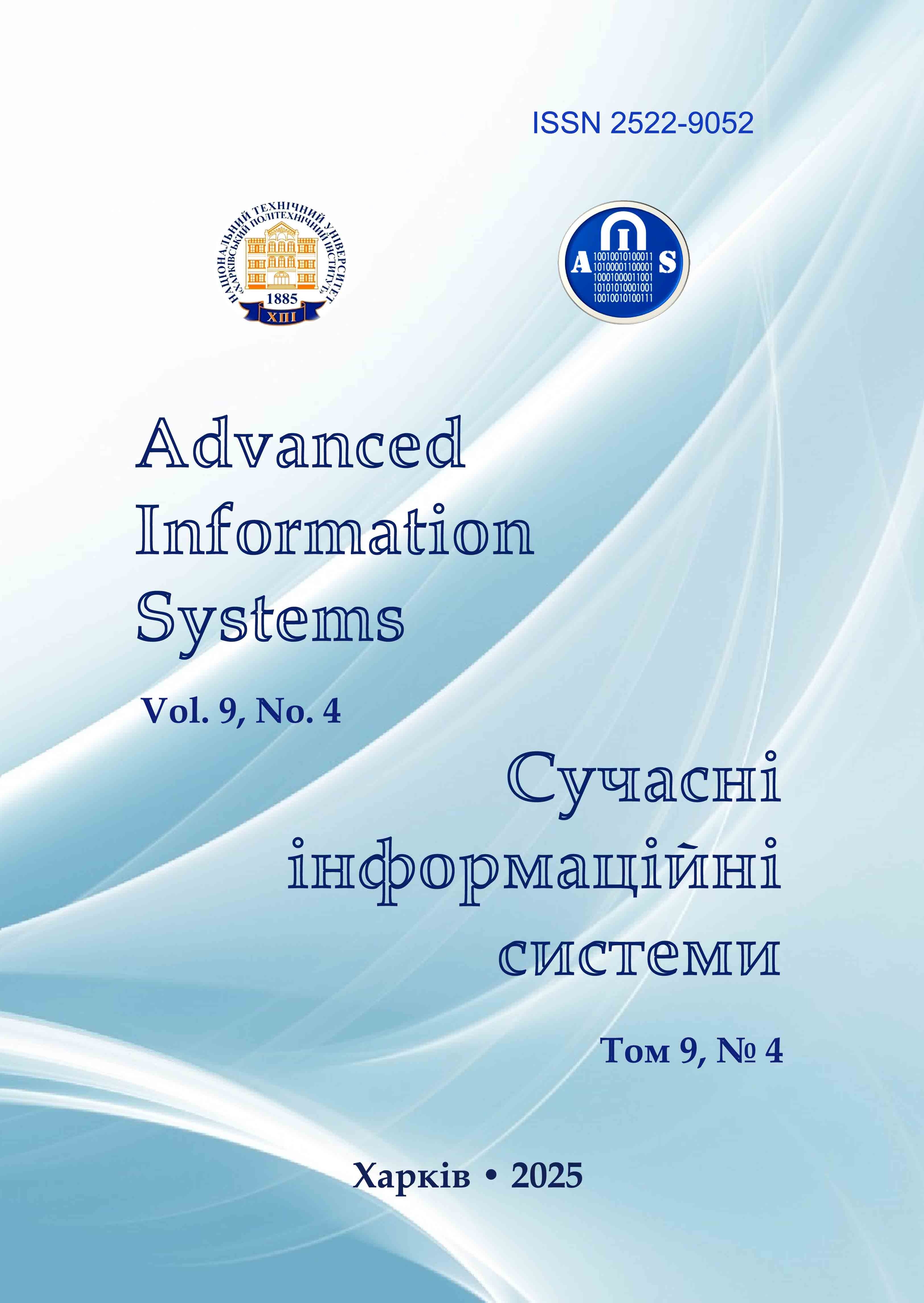MODELLING THE PROPAGATION OF MAGNETIC FIELDS FROM MULTIPLE DIVERSE SOURCES
Main Article Content
Abstract
Man-made magnetic fields have a negative impact on humans. When there are many sources of magnetic fields, their combined effects are unpredictable. The patterns of propagation of fields from different sources vary. This complicates the process of planning the placement of electrical equipment in specific areas. The most acceptable way to predict the electromagnetic environment at the design stages is to model the propagation of magnetic fields from multiple sources. The aim of the study is to model the propagation of magnetic fields from multiple sources with different patterns of spatial propagation. Research results. The most significant factor of constant influence on humans is extremely low frequency electromagnetic fields. At the same time, the magnetic component of these fields is not shielded by equipment housings. Therefore, it is advisable to model the propagation of the magnetic field. It is shown that all sources of the magnetic field can be considered as a combination of magnetic dipoles. To model the propagation of a dipole-type magnetic field, the ratio for the vector magnetic potential is used. To model the propagation of dipole-quadrupole-type magnetic fields, it is advisable to use Gauss's equation for the scalar potential. This allows the presence of spatial harmonics of the magnetic field to be taken into account. The propagation of the magnetic field in the plane where people are located was modelled. It has been established that even in the presence of field superposition, the change in magnetic field intensity with distance from each source is non-monotonic. There are zones of minimum and maximum field intensity. This allows the zones of safe human presence and the location of protective magnetic screens to be clearly defined at the design stage. Criteria for taking into account the required number of spatial harmonics of the magnetic field have been determined. This indicator is determined by the relative distance from the field source to its dimensions in a spherical approximation. Conclusions. The mathematical functions determined and used in the process of modelling the propagation of magnetic fields from multiple sources provide an acceptable modelling error. In the process of modelling the propagation of quadrupole-type magnetic fields in a given plane, the spatial orientation of the field sources should be taken into account. The field structure for electric machines in a plane is determined by the orientation of the machine poles relative to the selected plane.
Article Details
References
Podoltsev, O. D., and Lomko, M. O. (2023), “Evaluation of the aging rate of polymer insulation of power cable under the action of periodic non-sinusoidal voltage”, Technical Electrodynamics, vol. 2023, issue 1, pp. 7–11, doi:
https://doi.org/10.15407/techned2023.01.007
Shcherba, A. A., Podoltsev, O. D., and Kucheriava, I. M. (2022), “The reduction of magnetic field of underground cable line in essential areas by means of finite-length composite magnetic shields”, Technical Electrodynamics, vol. 2022, issue 1, рр. 17–24, doi: https://doi.org/10.15407/techned2022.01.017
Grinchenko, V.S. (2018), “Mitigation of three-phase power line magnetic field by grid electromagnetic shield”, Tekhnichna Elektrodynamika, vol. 2018, issue 4, pp. 29–32, doi: https://doi.org/10.15407/techned2018.04.029.
Levchenko, L., Ausheva, N., Karaeva, N., Glyva, V., and Burdeina, N. (2022), “Calculationapparatus for modeling radio engineering and electrical engineering objects”, AVIATION IN THE XXI-st CENTURY 2022, September 28, 2022 – September 30, 2022, National Aviation University, Kyiv, pp. 4.2.6-4.2.10, available at:
https://conference.nau.edu.ua/index.php/Congress/Congress2022/paper/viewFile/8525/7280
Khalifa, T., and Alnabi, A. (2015), “Electromagnetic Pollution Emitted from Base Station”, International Journal of Science and Research, vol. 4, issue 1, pp. 1125–1132, available at: https://www.ijsr.net/getabstract.php?paperid=SEP14708
Wenying, Yang, Yuhang, Pan, Zilan, Qiu, and Guofu, Zhai (2023), “Electromagnetic transient model and field-circuit coupling numerical calculation of Sen transformer based on finite-element method”, Electric Power Systems Research, vol. 214, part B, 108941, doi: https://doi.org/10.1016/j.epsr.2022.108941
Li, Y., Luo, Z., Li, Y., Zhu, J., Zhang, B., and Zou, J. (2024), “Modeling of Fe-Based Soft Magnetic Materials for Multiphysical Analysis of Medium-Frequency Transformers”, IEEE Transactions on Power Electronics, vol. 39, no. 10, pp. 12249-12260, Oct. 2024, doi: doi: https://doi.org/10.1109/TPEL.2024.3393241
Getman, A. (2018), “Cylindrical harmonic analysis of the magnetic field in the aperture of the superconducting winding of an electromagnet”, Eastern-European Journal of Enterprise Technologies, vol. 1(5(91)), pp. 4–9, doi: https://doi.org/10.15587/1729-4061.2018.123607
Getman, A. (2018), “Development of the technique for improving the structure of a magnetic field in the aperture of a quadrupole electromagnet with a superconducting winding”, Eastern-European Journal of Enterprise Technologies, vol. 5(5(95), Р. 6–12, doi: https://doi.org/10.15587/1729-4061.2018.142163
Levchenko, L., Glyva, V., and Burdeina, N. (2022), “Mathematical apparatus for modelling of the propagation the magnetic field electric machines with a given accuracy”, Advanced Information Systems, vol. 2, no. 6, pp. 5–9, doi: https://doi.org/10.20998/2522-9052.2022.2.01.
Levchenko, L., Ausheva, N., Burdeina, N., Aznaurian, I., Biruk, Y., Kasatkina,N., Matvieieva, I., Nazarenko, V., Nikolaiev, K., and Tykhenko, O. (2022), “Development of Models of the Electromagnetic Environment in Buildings and Urbanized Areas”, Eastern-European Journal of Enterprise Technologies, vol. 6(10-120), pp. 35–45, doi: https://doi.org/10.15587/1729-4061.2022.268439
